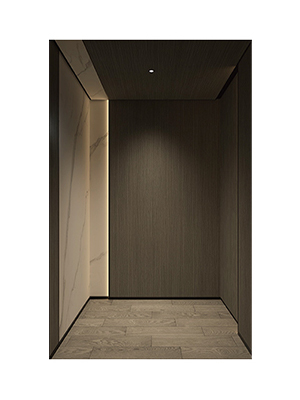Hospital bed elevators, also known as medical bed elevators or patient elevators, play a vital role in modern healthcare facilities. Unlike ordinary passenger lifts, these elevators are specially designed to accommodate stretchers, wheelchairs, and medical equipment while ensuring the safe and efficient movement of patients. One of the most common concerns when discussing these elevators is speed: Do hospital bed elevators work fast enough to meet urgent medical needs?
1. The Importance of Speed in Hospital Elevators
In a hospital environment, time is often critical. Whether it’s transporting a patient from the emergency department to the operating room or moving someone quickly to the intensive care unit (ICU), every second counts. Slow or delayed transportation could negatively affect patient outcomes.
Therefore, hospital bed elevators are typically engineered to operate at a faster pace than standard residential or small commercial elevators, while still maintaining a smooth and safe ride for patients.
2. Typical Speed Range of Hospital Bed Elevators
The speed of hospital bed elevators usually depends on the building height, design, and usage demand. In general:
- Low-rise hospitals (3–6 floors): Elevators may travel at around 0.75–1.5 meters per second.
- Mid- to high-rise hospitals (7–20 floors): Elevators often operate between 1.5–2.5 meters per second.
- Specialized fast-response elevators: Some advanced hospitals install elevators that reach 3 meters per second or more to handle emergencies.
Compared with regular passenger elevators, which often run at 0.5–1.0 meters per second in small buildings, hospital elevators are indeed faster and more reliable for medical use.
3. Balancing Speed with Safety and Comfort
While speed is important, hospital elevators are not designed to move as fast as high-rise office elevators or express lifts in skyscrapers. This is because:
- Patient safety: Sudden acceleration or abrupt stops could be harmful to patients, especially those on stretchers or with critical conditions.
- Smooth ride: Patients may experience discomfort if the elevator jerks during movement.
- Equipment handling: Medical devices like IV stands, oxygen tanks, or portable monitors need a stable ride to avoid accidents.
Thus, hospital bed elevators strike a balance between speed and smooth operation, ensuring patients and staff travel quickly but comfortably.
4. Emergency Prioritization Systems
Modern hospital elevators often include priority call systems. For example:
- Emergency mode: When doctors or nurses press a special button, the elevator can override other calls and arrive immediately to transport a critical patient.
- Key card or code access: Staff can use special access to make elevators move faster or directly to a specific floor without unnecessary stops.
- Firefighter and disaster control: In emergencies, elevators may switch to a dedicated safety mode.
These features significantly improve the “effective speed” of hospital elevators, reducing waiting time during urgent situations.
5. Factors Influencing Performance
The speed and responsiveness of hospital bed elevators depend on several factors:
- Load capacity: Elevators designed to carry heavy beds and multiple staff may move slightly slower under maximum load.
- Building height and traffic: Taller hospitals require faster elevators to save time, while smaller hospitals may prioritize cost and comfort.
- Technology used: Gearless traction systems and modern control software allow smoother and faster operation than older hydraulic elevators.
- Maintenance quality: Poorly maintained elevators may run slower or experience delays, while regular servicing ensures peak performance.
6. Comparison with Regular Passenger Elevators
- Passenger elevators: Usually prioritize comfort for standing passengers, with moderate speed.
- Hospital bed elevators: Prioritize urgency, capacity, and accessibility, often running faster and with advanced control systems to minimize delays.
This makes hospital elevators more efficient in critical environments compared to ordinary elevators.
7. Conclusion
So, does hospital bed elevators work fast? The answer is yes, they are designed to be faster and more efficient than standard elevators, while also ensuring safety, stability, and comfort for patients. Although they may not reach the extreme speeds of skyscraper lifts, hospital elevators balance speed with the unique needs of healthcare environments.
In practice, hospital bed elevators usually travel between 1.0 to 2.5 meters per second, with priority controls to reduce waiting time during emergencies. This speed is sufficient to support rapid patient transfer, helping doctors and nurses save valuable minutes in critical medical situations.
For hospitals, the right combination of speed, reliability, and smooth operation is essential. When properly designed and maintained, hospital bed elevators truly support the mission of providing safe, efficient, and life-saving care.












